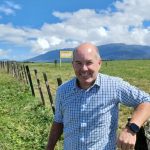“We always offer to walk through the reports with farmers to help them understand the results and discuss the feasibility of changes in management suggested by the opportunity table for their individual farm,” said Godber. “The opportunity table isn’t intended to criticize current performance, instead it’s meant to open discussions about potential opportunities.
“The drivers of high balances are often feed and fertilizer imports, which have a price tag attached to them,” she continued. “Identifying potential strategies to reduce these imports could help to improve farm economics and overall efficiency.”
Farmers also receive trend plots that allow them to track progress over time, and see how management changes or weather events may have impacted balances. “The NMB output helps farms make the case that they already implement good practices, opening up more flexibility in terms of distribution of manure across the farms’ cropland,” explained Ketterings. “This could be a significant savings in terms of time and resources for the farm.”
Demonstrating sound nutrient stewardship by managing N or P within the feasible balances per acre allows farms to make use of benefits offered under the Adaptive Nitrogen Management policy and New York Phosphorus Index assessment, Ketterings pointed out. The NMB considers the whole farm, capturing interactions between different management aspects and allowing farmers to compare themselves to peers, track their own farm progress over time and set achievable goals.
Check out the NMSP website for more information about the whole-farm nutrient mass balance project. If you are a New York farmer who would like to streamline your environmental and economic efficiency by having your milk footprinted for nutrient use, email Olivia Godber.
Madeline Hanscom is a writer for the Nutrient Management Spear Program.
You can now read the most important #news on #eDairyNews #Whatsapp channels!!!
🇺🇸 eDairy News INGLÊS: https://whatsapp.com/channel/0029VaKsjzGDTkJyIN6hcP1K



























